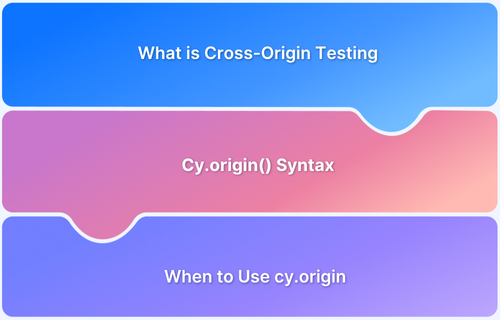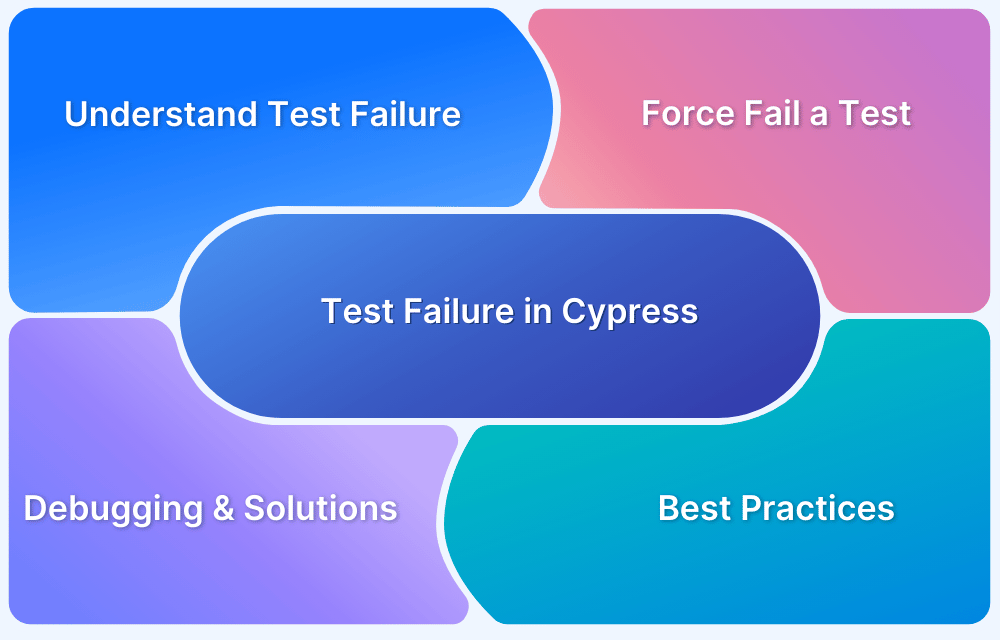Understanding cy.window: Tutorial
By Ayush Singh, Community Contributor - December 13, 2024
Cypress comes with the ability to interact with the browser’s window object. With the help of its functionality called Cypress Window (cy.window()), the framework can provide direct access to the window object of an application under test. This ability can be beneficial for testing various functionalities of web applications.
Understand further about “cy.window()” in Cypress and its implementation with this guide.
What is a Cypress Window?
“cy.window()” is a cypress command that lets users access the global ‘window’ object of an application.
The window object is integral to the browser’s environment. It contains methods and properties that are crucial for controlling the behavior of the browser and its interaction with DOM.
With the help of “cy.window”, testers can manipulate or insert properties and methods directly on the window object. This will simplify the testing of complex interactions within web applications.
cy.window
The “cy.window()” command executes the current window object of your application, enabling users to perform various actions such as invoking methods or asserting properties.
This command is particularly useful when anyone needs to test functionalities that rely on the window object, such as opening new tabs, handling events, or managing global variables.
Read More: How to write Cypress Tests
How to Use cy.window?
There are various approaches to using “cy.window” in your application, either through test functionalities or global variables.
Syntax
The basic syntax is:
cy.window()In order to pass an options object to customize its behavior, you can use:
cy.window({ log: true })Usage
To use “cy.window()”, simply add it after a command that yields a DOM element or after visiting a URL.
For example:
cy.visit('http://localhost:3000') cy.window().then((win) => { });
Arguments
The options object can include parameters such as:
- log: Boolean value indicating whether to log the command in the Command Log (default is “true”).
- timeout: Time to wait for “cy.window()” to resolve before timing out (default is “defaultCommandTimeout”).
Read More: How to Use cy.session()
Examples of Using Cypress Window
Here are some of the use cases mentioned for using “cy.window()” effectively:
Example 1: Accessing Global Variables
Suppose an application sets a global variable in the window object.
Its value can be changed with:
cy.visit('http://localhost:3000') cy.window().its('myGlobalVar').should('equal', 'expectedValue');
Example 2: Stubbing Window Methods
If anyone wants to test a function that calls “window.alert”, then it can be done with:
cy.visit('http://localhost:3000') cy.window().then((win) => { cy.stub(win, 'alert').as('alertStub'); cy.get('button#trigger-alert').click(); cy.get('@alertStub').should('have.been.calledWith', 'Expected alert message'); });
Best Practices for Using Cypress Window
When working with cy.window(), consider these best practices:
- Usage of Clear Naming Conventions: Use clear and descriptive names when accessing properties or methods on the window object to improve the readability and maintainability of tests.
- Use Aliases for Repeated Access: To access the window object multiple times within a test, use an alias to store it. This reduces redundancy and improves performance by minimizing repeated calls to “cy.window()”.
- Usage of Stubs and Spies: Use stubs and spies on methods in the window object to verify interactions without causing side effects.
- Keep Tests Isolated: Ensure each test case is independent by resetting any changes made to the window object.
Read More: Cypress Best Practices for Test Automation
Common Issues and Troubleshooting with cy.window
While the usage of cy.window() can significantly improve testing capabilities, developers may face some common issues like:
- Accessing Nested Frames: While working with iframes, accessing the window object can be tricky. Ensure to switch context to the iframe before calling “cy.window()”. Use “cy.iframe()” to target the iframe and then call “cy.window()”.
cy.get('iframe#my-iframe').then(($iframe) => { const win = $iframe[0].contentWindow; cy.wrap(win).its('myGlobalVar').should('equal', 'expectedValue'); });
- Debugging Window Properties: Being unsure about the properties or methods available on the window object, logging them can be helpful. Use “console.log(win)” within a ‘.then()’ block to inspect the window object in your browser’s console.
Why Run Cypress Tests on BrowserStack Automate?
BrowserStack Automate provides an efficient solution for developers to enhance their testing capabilities by offering a cloud-based infrastructure that allows teams to run, scale, and debug their Cypress tests seamlessly across various environments.
This platform is designed to simplify the testing process and allow teams to focus on delivering high-quality applications without the overhead of managing local testing setups
Advantages of Running Cypress Tests on BrowserStack Automate
There are several advantages of running cypress tests on Automate, such as:
- Cross-Browser Testing: Easily test applications across 100+ browser versions on both Windows and macOS, ensuring compatibility with various user environments.
- Seamless CI/CD Integration: Easily integrate with popular CI/CD tools like Jenkins, CircleCI, automating the testing process within the development pipeline.
- Real Device Testing: Access a huge list of real devices and browsers to conduct tests under realistic conditions, improving the accuracy of test outcomes.
- Scalability Without Maintenance: Scale your testing infrastructure effortlessly without the need to manage Docker images or install browsers locally.
Read More: How to perform Cypress Test Automation
Conclusion
Using the command of “cy.window()”, anyone can interact with the browser’s window object directly, allowing for more sophisticated testing scenarios.
These practices will ensure that your tests remain reliable and maintainable. With tools like BrowserStack Automate, running these tests becomes even more efficient across diverse environments.
Useful Resources for Cypress
Understanding Cypress
- Cross Browser Testing with Cypress : Tutorial
- Run Cypress tests in parallel without Dashboard: Tutorial
- Handling Test Failures in Cypress A Comprehensive Guide
- Cypress Test Runner: Tutorial
- Handling Touch and Mouse events using Cypress
- Cypress Automation Tutorial
- CSS Selectors in Cypress
- Performance Testing with Cypress: A detailed Guide
- Cypress Best Practices for Test Automation
- Test React Native Apps with Cypress
- Cypress E2E Angular Testing: Advanced Tutorial
- Cypress Locators : How to find HTML elements
- Maximizing Web Security with Cypress: A Step-by-Step Guide
- Conditional Testing in Cypress: Tutorial
- Cypress Web Testing Framework: Getting Started
- Cypress Disable Test: How to use Skip and Only in Cypress
- What’s new in Cypress 10? How it will change your current testing requirements
Use Cases
- How to Record Cypress Tests? (Detailed Guide)
- How to run your first Visual Test with Cypress
- How to Fill and Submit Forms in Cypress
- How to Automate Localization Testing using Cypress
- How to run Cypress Tests in Chrome and Edge
- How to use Cypress App Actions?
- How to Run Cypress Tests for your Create-React-App Application
- How to Run Cypress Tests in Parallel
- How to handle Click Events in Cypress
- How to Test React using Cypress
- How to Perform Visual Testing for Components in Cypress
- How to run UI tests in Cypress
- How to test redirect with Cypress
- How to Perform Screenshot Testing in Cypress
- How to write Test Case in Cypress: (with testing example)
Tool Comparisons




